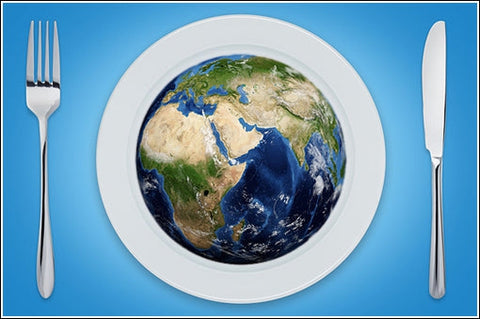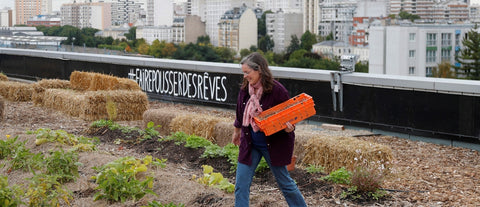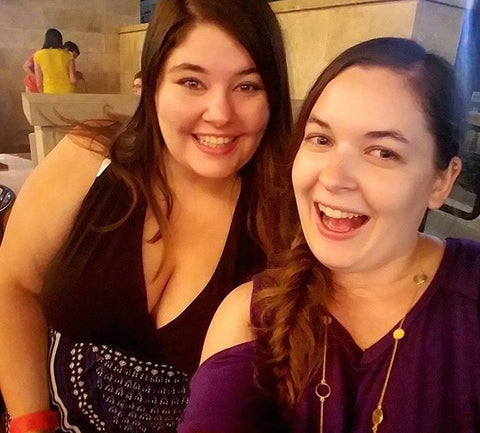Healthy eating isn’t only good for you – it also happens to be one of the most effective ways to reduce your personal environmental footprint. Food & Agriculture is the #1 source globally of land clearing, deforestation, species extinction, and freshwater use. It is also a leading contributor to GHG emissions and hence climate change.
There is unlikely to be a decision we make today (unless perhaps you’re booking a flight) that will have a greater impact on the environmental legacy we leave behind than what we decide to eat. Fortunately, following a few simple rules of thumb can drastically reduce our environmental footprint. The following are food choice tips that are both good for the planet and likely good for our own health too.
TIP 1: EAT LESS MEAT (AND CHEESE)
The biggest problem with animal products is that animals are, categorically speaking, bad at converting the calories they eat into calories that are available to us.
On average, only 7-8% of the calories needed to produce meat are available when it becomes available to us as food. Beef is particularly bad, at closer to 3%. So rather than waste 90% of the resources that go into cultivating meat, why not just bypass the animal and eat more fruits, veggies, nuts, and greens ourselves.

Animal agriculture also requires vast amounts of land. Over 90% of the land clearing taking place in the Amazon forest right now is taking place in order to make room for cattle. As natural habitats are being cleared, carbon is being released into our atmosphere, and wildlife is being killed. Think that’s just a South American problem? Think again. The Amazon rainforest produces 20% of the world’s total oxygen supply. More beef = less air to breathe. It’s that simple. Some studies have estimated that it requires as much as 16x as much land to support a meat-heavy diet compared to a vegan’s.
Not only does meat consumption require a lot of land, but it also uses a lot of water. In fact, about half of total water consumption in the US is for raising animals, and much like energy conversion, this is an incredibly inefficient process. It requires as much as 2400 gallons of water to produce a single pound of meat. Meanwhile, we could produce a pound of wheat with only 25 gallons of water – that’s roughly 1%!
Not only will you be doing the planet some good by reducing meat consumption, but also your health. According to Harvard Medical School, cutting back on meat can reduce mortality rates, vision issues, and multiple types of cancer.
TIP 2: EAT (WHAT GROWS WELL) LOCALLY
You might have already heard the stat that the average American meal travels over 1,500 miles between farm to table. Crazy, huh? Many consumers have embraced the local food movement in response to this. It’s also given rise to a subculture of people that identify themselves as ‘locavores’. But is being a locavore really a good thing for the planet? Well, the truth is, it depends…
Obviously, if all else were equal, then less transport energy is a good thing. The problem is that all else is rarely equal. Different crops like different environments, rainfalls, types of soil, and temperatures. Growing a plant in a sub-optimal location means we need to somehow compensate or support its growth with the addition of more resources.
Consider strawberries grown in Upstate New York during winter as an example. Could it be done? Sure. But you’d need to construct a massive greenhouse, heat it to keep them warm, and run artificial lighting for most of the day. Is all that additional energy required better or worse than the energy we could otherwise spend on transporting those strawberries from somewhere that they could be more easily grown? According to Grow NYC, “It takes 435 fossil-fuel calories to fly a 5-calorie strawberry from California to New York.” Well, that clearly sucks, but is that more or less than the fossil fuels required to grow it locally were we to aim to do so in New York?
This topic can get very complicated very quickly. In our view, the classic Locavore’s mantra of “Eat Locally” ought to be elaborated to “Eat (What Grows Well and In Abundance) Locally”. If you’re a die-hard Strawberry fan and want to eat them year-round, then NYC probably ain’t the place for you.
Not sure what falls into the category of ‘growing well locally’? Head to your local farmers' market and it should be pretty clear.
TIP 3: AVOID PROCESSED / PACKAGED FOODS
There are two main reasons to avoid processed and packaged foods:
- 12 types of plants and 5 types of animals make up about 75% of our food supply. Most processed and packaged food in the US is made from crops that are grown with government subsidies on monoculture farms; wheat, corn, and soy. By eating this sort of food, you’re supporting this type of agriculture.
- Embodied energy. In addition to the energy that’s used to process and transport these foods, there’s also all the waste that goes into their storage and display within our supermarkets.
It’s not just the environment you’ll be saving by avoiding these types of food. There are also some pretty compelling health reasons. By its very nature, processed and packaged foods need to be long-life and shelf-stable. The least stable part of food is the nutrients. These break down the fastest. In order to avoid foods that decompose on the shelves, this means that these foods need to have the nutrients removed (or the plants will consume them while they wait on the shelf). Sugars, starches, and carbohydrates have a longer shelf life and are more stable; hence that’s what you’re getting.
TIP 4: MEAL PLAN TO AVOID FOOD WASTE
Roughly 40% of the food produced in the US never gets consumed. And the environmental consequences of that are mind-blowing. It has since been heavily disputed by other sources (so don’t quote us on it!), but the UN once estimated that if ‘food waste’ were a country it’d be the 3rd largest in the world in terms of greenhouse gas emissions. Although we don’t know the exact impact of it, it seems hard to dispute that food waste is a HUGE source of adverse climate impacts.

So how can you do your part? Meal plan. DO NOT go to the grocery store on an empty stomach. Your impulses WILL get the better of you. Instead, while you’re enjoying a filling weekend breakfast, pull out a recipe book and note pad and figure out what you’re going to eat for the week. By planning ahead and not making on-the-spot choices at the shops, you’re likely to not only save money but also drastically reduce the amount of waste you produce.
One of the biggest complaints we hear about plant-based eating from meat-eaters is that it’s not filling. And sure, if you’re chomping on lettuce leaves all day, then that’s probably true! But with a little education about alternative protein sources, this is very easy to remedy. We’re also BIG fans of Hetty McKinnon and her wholesome, hearty plant-based comfort food. We guarantee these recipes won’t leave you feeling hungry! Why not pick out 3-4 recipes per week, come up with a grocery list, then head out to shop for only what you need to complete these recipes.
TIP 5: GROW YOUR OWN
Yes – we’re advocates of growing your own food – hopefully, that’s not a surprise (!), but the reasons for it may not be what you’d think. Let’s be straight here; growing your own food IS NOT about self-sufficiency. Unless you live on a farm or have a massive outdoor space, and want to make a part (to full) time job out of it, you ain’t gonna support the family with your








There are no comments for this article. Be the first one to leave a message!